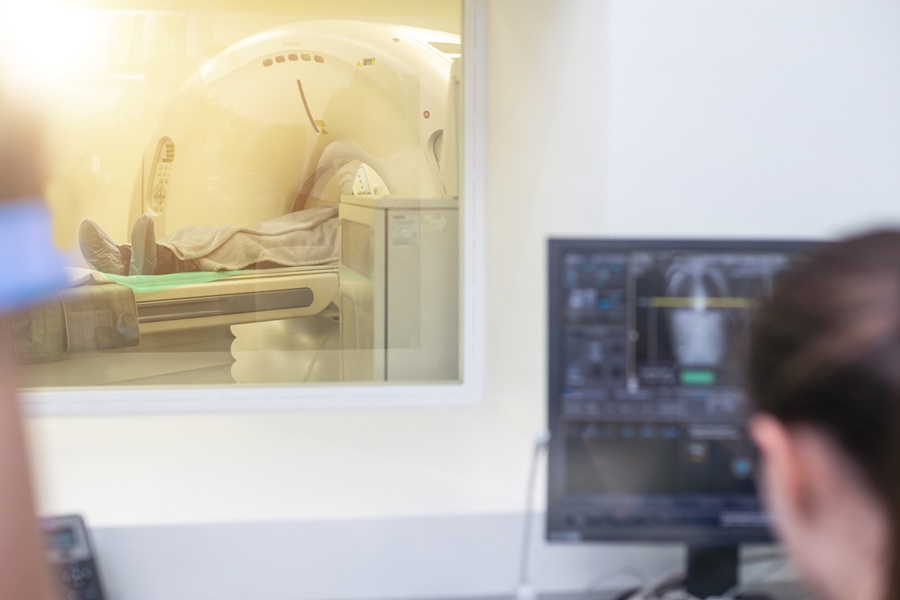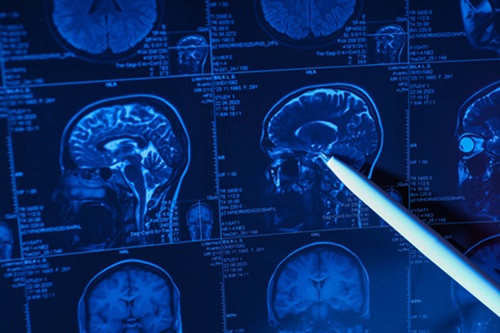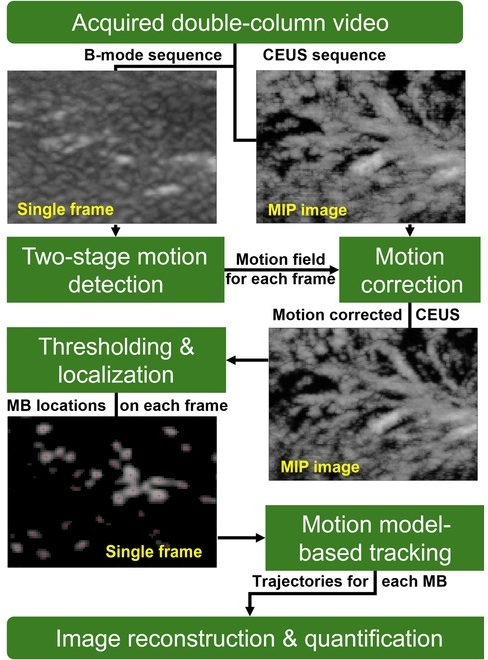Optical MEG Sensor Detects Weak Brain Waves
|
By MedImaging International staff writers Posted on 14 Dec 2020 |

Image: Optically pumped magnetometer sensors could detect brain injuries on-site (Photo courtesy of UB)
An optical magnetoencephalography (MEG) sensor can help detect signs of traumatic brain injury (TBI), dementia, and schizophrenia, according to a new study.
Developed at the University of Birmingham (UB; United Kingdom), the new sensor is based on an optically pumped magnetometer (OPM) that utilizes a nonlinear magneto-optical rotation (NMOR) technique, with polarized light used to detect changes in the orientation of atom spin when exposed to a magnetic field. The sensor head, which contains only optical, non-ferrous elements, is connected to a module that holds all the electronic components located outside the magnetically shielded room to further reducing crosstalk.
Using the OPM sensor, the researchers were able to detect auditory evoked fields in a background field of 70 nT, suggesting it could be used for MEG testing outside of a specialized unit, or even in a hospital ward. When it was benchmarked against conventional superconducting quantum interference device (SQUID) sensors, performance was comparable. The researchers further demonstrated that the OPM sensor could detect brain oscillation modulations in the alpha band. The study was published on October 24, 2020, in NeuroImage.
“Existing MEG sensors need to be at a constant, cool temperature and this requires a bulky helium-cooling system, which means they have to be arranged in a rigid helmet that will not fit every head size and shape. They also require a zero-magnetic field environment to pick up the brain signals,” said lead author Anna Kowalczyk, PhD. “Testing demonstrated that our stand-alone sensor does not require these conditions. Its performance surpasses existing sensors, and it can discriminate between background magnetic fields and brain activity.”
“We know that early diagnosis improves outcomes and this technology could provide the sensitivity to detect the earliest changes in brain activity in conditions like schizophrenia, dementia, and ADHD,” said study co-author Professor Ole Jensen, PhD, co-director of the UB Centre for Human Brain Health. “It also has immediate clinical relevance, and we are already working with clinicians at the Queen Elizabeth hospital to investigate its use in pinpointing the site of traumatic brain injuries.”
MEG systems have traditionally been based on very sensitive magnetometers cryogenic sensors which detect the small extracranial magnetic fields generated by synchronized current in neuronal assemblies. Newer non-cryogenic quantum-enabled sensors are based on OPMs. This allows for a millisecond-by-millisecond picture of which parts of the brain are engaged when different tasks are undertaken, such as speaking or moving.
Related Links:
University of Birmingham
Developed at the University of Birmingham (UB; United Kingdom), the new sensor is based on an optically pumped magnetometer (OPM) that utilizes a nonlinear magneto-optical rotation (NMOR) technique, with polarized light used to detect changes in the orientation of atom spin when exposed to a magnetic field. The sensor head, which contains only optical, non-ferrous elements, is connected to a module that holds all the electronic components located outside the magnetically shielded room to further reducing crosstalk.
Using the OPM sensor, the researchers were able to detect auditory evoked fields in a background field of 70 nT, suggesting it could be used for MEG testing outside of a specialized unit, or even in a hospital ward. When it was benchmarked against conventional superconducting quantum interference device (SQUID) sensors, performance was comparable. The researchers further demonstrated that the OPM sensor could detect brain oscillation modulations in the alpha band. The study was published on October 24, 2020, in NeuroImage.
“Existing MEG sensors need to be at a constant, cool temperature and this requires a bulky helium-cooling system, which means they have to be arranged in a rigid helmet that will not fit every head size and shape. They also require a zero-magnetic field environment to pick up the brain signals,” said lead author Anna Kowalczyk, PhD. “Testing demonstrated that our stand-alone sensor does not require these conditions. Its performance surpasses existing sensors, and it can discriminate between background magnetic fields and brain activity.”
“We know that early diagnosis improves outcomes and this technology could provide the sensitivity to detect the earliest changes in brain activity in conditions like schizophrenia, dementia, and ADHD,” said study co-author Professor Ole Jensen, PhD, co-director of the UB Centre for Human Brain Health. “It also has immediate clinical relevance, and we are already working with clinicians at the Queen Elizabeth hospital to investigate its use in pinpointing the site of traumatic brain injuries.”
MEG systems have traditionally been based on very sensitive magnetometers cryogenic sensors which detect the small extracranial magnetic fields generated by synchronized current in neuronal assemblies. Newer non-cryogenic quantum-enabled sensors are based on OPMs. This allows for a millisecond-by-millisecond picture of which parts of the brain are engaged when different tasks are undertaken, such as speaking or moving.
Related Links:
University of Birmingham
Latest General/Advanced Imaging News
- First-Of-Its-Kind Wearable Device Offers Revolutionary Alternative to CT Scans
- AI-Based CT Scan Analysis Predicts Early-Stage Kidney Damage Due to Cancer Treatments
- CT-Based Deep Learning-Driven Tool to Enhance Liver Cancer Diagnosis
- AI-Powered Imaging System Improves Lung Cancer Diagnosis
- AI Model Significantly Enhances Low-Dose CT Capabilities
- Ultra-Low Dose CT Aids Pneumonia Diagnosis in Immunocompromised Patients
- AI Reduces CT Lung Cancer Screening Workload by Almost 80%
- Cutting-Edge Technology Combines Light and Sound for Real-Time Stroke Monitoring
- AI System Detects Subtle Changes in Series of Medical Images Over Time
- New CT Scan Technique to Improve Prognosis and Treatments for Head and Neck Cancers
- World’s First Mobile Whole-Body CT Scanner to Provide Diagnostics at POC
- Comprehensive CT Scans Could Identify Atherosclerosis Among Lung Cancer Patients
- AI Improves Detection of Colorectal Cancer on Routine Abdominopelvic CT Scans
- Super-Resolution Technology Enhances Clinical Bone Imaging to Predict Osteoporotic Fracture Risk
- AI-Powered Abdomen Map Enables Early Cancer Detection
- Deep Learning Model Detects Lung Tumors on CT
Channels
Radiography
view channel
Machine Learning Algorithm Identifies Cardiovascular Risk from Routine Bone Density Scans
A new study published in the Journal of Bone and Mineral Research reveals that an automated machine learning program can predict the risk of cardiovascular events and falls or fractures by analyzing bone... Read more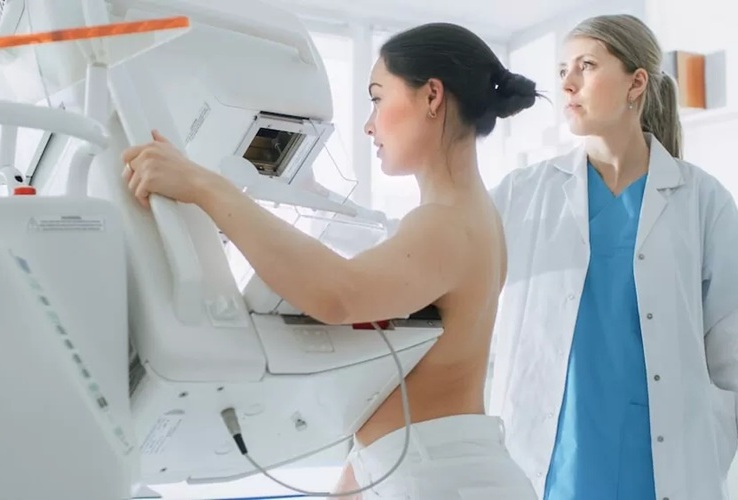
AI Improves Early Detection of Interval Breast Cancers
Interval breast cancers, which occur between routine screenings, are easier to treat when detected earlier. Early detection can reduce the need for aggressive treatments and improve the chances of better outcomes.... Read more
World's Largest Class Single Crystal Diamond Radiation Detector Opens New Possibilities for Diagnostic Imaging
Diamonds possess ideal physical properties for radiation detection, such as exceptional thermal and chemical stability along with a quick response time. Made of carbon with an atomic number of six, diamonds... Read moreMRI
view channel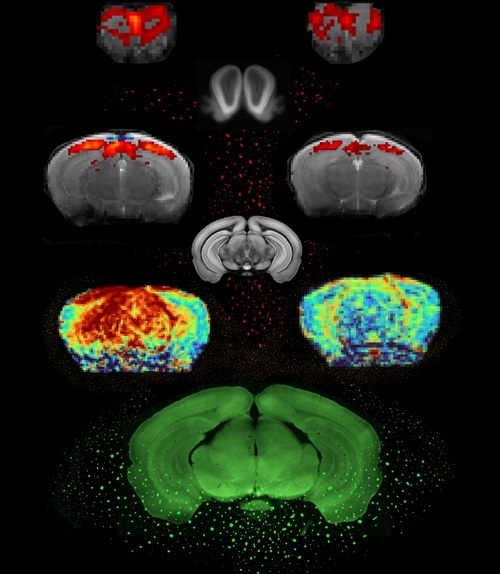
Simple Brain Scan Diagnoses Parkinson's Disease Years Before It Becomes Untreatable
Parkinson's disease (PD) remains a challenging condition to treat, with no known cure. Though therapies have improved over time, and ongoing research focuses on methods to slow or alter the disease’s progression,... Read more
Cutting-Edge MRI Technology to Revolutionize Diagnosis of Common Heart Problem
Aortic stenosis is a common and potentially life-threatening heart condition. It occurs when the aortic valve, which regulates blood flow from the heart to the rest of the body, becomes stiff and narrow.... Read moreUltrasound
view channel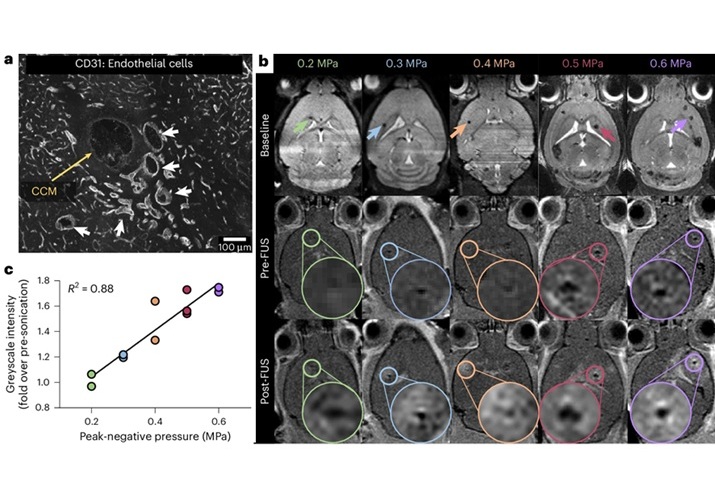
New Incision-Free Technique Halts Growth of Debilitating Brain Lesions
Cerebral cavernous malformations (CCMs), also known as cavernomas, are abnormal clusters of blood vessels that can grow in the brain, spinal cord, or other parts of the body. While most cases remain asymptomatic,... Read more.jpeg)
AI-Powered Lung Ultrasound Outperforms Human Experts in Tuberculosis Diagnosis
Despite global declines in tuberculosis (TB) rates in previous years, the incidence of TB rose by 4.6% from 2020 to 2023. Early screening and rapid diagnosis are essential elements of the World Health... Read moreNuclear Medicine
view channel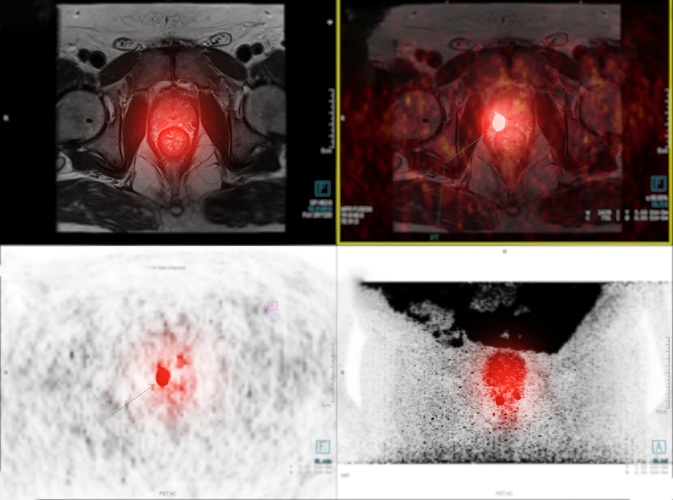
New Imaging Approach Could Reduce Need for Biopsies to Monitor Prostate Cancer
Prostate cancer is the second leading cause of cancer-related death among men in the United States. However, the majority of older men diagnosed with prostate cancer have slow-growing, low-risk forms of... Read more
Novel Radiolabeled Antibody Improves Diagnosis and Treatment of Solid Tumors
Interleukin-13 receptor α-2 (IL13Rα2) is a cell surface receptor commonly found in solid tumors such as glioblastoma, melanoma, and breast cancer. It is minimally expressed in normal tissues, making it... Read moreImaging IT
view channel
New Google Cloud Medical Imaging Suite Makes Imaging Healthcare Data More Accessible
Medical imaging is a critical tool used to diagnose patients, and there are billions of medical images scanned globally each year. Imaging data accounts for about 90% of all healthcare data1 and, until... Read more
Global AI in Medical Diagnostics Market to Be Driven by Demand for Image Recognition in Radiology
The global artificial intelligence (AI) in medical diagnostics market is expanding with early disease detection being one of its key applications and image recognition becoming a compelling consumer proposition... Read moreIndustry News
view channel
GE HealthCare and NVIDIA Collaboration to Reimagine Diagnostic Imaging
GE HealthCare (Chicago, IL, USA) has entered into a collaboration with NVIDIA (Santa Clara, CA, USA), expanding the existing relationship between the two companies to focus on pioneering innovation in... Read more
Patient-Specific 3D-Printed Phantoms Transform CT Imaging
New research has highlighted how anatomically precise, patient-specific 3D-printed phantoms are proving to be scalable, cost-effective, and efficient tools in the development of new CT scan algorithms... Read more
Siemens and Sectra Collaborate on Enhancing Radiology Workflows
Siemens Healthineers (Forchheim, Germany) and Sectra (Linköping, Sweden) have entered into a collaboration aimed at enhancing radiologists' diagnostic capabilities and, in turn, improving patient care... Read more













